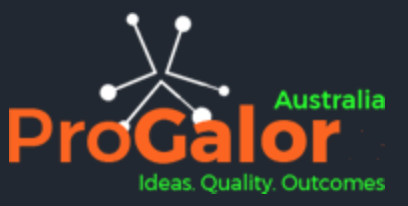ISO/IEC 27001 Lead Implementer (Information Security Management System)
Highlights of course
This course provides instructions on the implementation of ISMS control requirements and on auditing existing control implementations to help organisations prepare for certification in accordance with ISO/IEC 27001. The contents of this guide include the ISMS control requirements that should be addressed by organisations considering certification.
This course helps you to learn each of the controls in Annex A of ISO/IEC 27001 from two different viewpoints:
•implementation guidance – what needs to be considered to fulfil the control requirements when implementing the controls from ISO/IEC 27001, Annex A. This guidance is aligned with ISO/IEC 27002, which gives advice on the implementation of the controls;
•auditing guidance – what should be checked, and how, when examining the implementation of ISO/IEC 27001 controls to ensure that the implementation covers the essential ISMS control requirements. It is important to emphasise that this guide does not cover the implementation or auditing of the ISMS process requirements (the main body of ISO/IEC 27001).
Who should attend
This course is intended to be attended by those involved in:
•designing, implementing and/or maintaining an ISMS;
•preparing for ISMS audits and assessments;
•carrying out internal ISMS audits and assessments1; and
•carrying out ISMS audits and assessments of other organisations.
This course makes reference to the following standards:
•ISO/IEC 27001 – the requirements specification for an ISMS. This International Standard is used as the basis for accredited certification.
•ISO/IEC 27002 – a reference for selecting controls as part of the implementation of an ISMS, and a guidance document for organisations implementing commonly accepted security controls. This course will be updated following any changes to these standards. Organisations
should therefore ensure that the correct version is being used for compliance checks related to pre-certification, certification and post-certification purposes.

Challenge
Implementing an Information Security Management System (ISMS) according to ISO 27001 can be a complex and challenging process. Here are some common challenges organizations may face:
- Lack of Top Management Support:
- Challenge: Without visible support from top management, obtaining necessary resources, budget, and organizational commitment for ISMS implementation can be difficult.
- Solution: Educate and engage top management on the importance of information security, regulatory requirements, and potential business impacts of security breaches. Secure their buy-in and active involvement in the ISMS implementation process.
- Resource Constraints:
- Challenge: Limited financial resources, skilled personnel, and time can hinder effective ISMS implementation.
- Solution: Conduct a thorough resource assessment, prioritize critical tasks, leverage internal expertise or external consultants as needed, and allocate resources strategically to key ISMS components such as risk assessment, policy development, and training.
- Complexity of Information Systems:
- Challenge: Modern organizations have complex IT infrastructures, interconnected systems, and diverse data types, making it challenging to identify and protect all critical assets.
- Solution: Conduct a comprehensive asset inventory and risk assessment to prioritize protection measures based on asset criticality and vulnerability levels. Implement segmentation, access controls, and monitoring mechanisms tailored to different system components.
- Organizational Culture and Awareness:
- Challenge: Information security is not always a priority for all employees, leading to compliance issues, negligence, or human errors that can compromise security.
- Solution: Foster a culture of security awareness through regular training, communication of policies and procedures, simulations of security incidents, and recognition of security-conscious behavior. Encourage reporting of security incidents or vulnerabilities without fear of reprisal.
- Integration with Business Processes:
- Challenge: Aligning ISMS requirements with existing business processes and workflows without disrupting operations can be challenging.
- Solution: Involve relevant stakeholders from different departments early in the ISMS planning phase. Conduct impact assessments, develop clear guidelines and procedures, and integrate security controls seamlessly into existing processes wherever possible.
- Compliance with Legal and Regulatory Requirements:
- Challenge: Keeping up-to-date with evolving legal and regulatory requirements related to information security can be challenging, especially in highly regulated industries.
- Solution: Establish a compliance management framework within the ISMS, regularly monitor changes in regulations, engage legal experts or consultants as needed, and ensure documentation and reporting mechanisms are in place to demonstrate compliance.
- Third-Party Risk Management:
- Challenge: Managing security risks associated with third-party vendors, suppliers, and partners who have access to sensitive information or systems.
- Solution: Implement robust vendor risk management processes, including due diligence assessments, contractual agreements with security clauses, regular audits, and ongoing monitoring of third-party security practices.
- Measuring and Monitoring Performance:
- Challenge: Lack of clear metrics, Key Performance Indicators (KPIs), and monitoring mechanisms to track ISMS effectiveness and compliance over time.
- Solution: Define measurable security objectives, set relevant KPIs aligned with business goals, implement monitoring tools and processes (such as security incident monitoring, vulnerability assessments, and compliance audits), and regularly review performance data to identify areas for improvement.
By addressing these challenges proactively, organizations can enhance their readiness for ISO 27001 certification, improve overall information security posture, and mitigate risks effectively. Regular reviews, audits, and updates to the ISMS ensure continuous improvement and resilience against evolving security threats.
Solution
Implementing an Information Security Management System (ISMS) according to ISO 27001 can indeed pose various challenges. Here are solutions tailored to each challenge:
- Lack of Top Management Support:
- Solution: Educate top management about the importance of information security and its alignment with business objectives. Present a business case highlighting potential risks, compliance requirements, and the long-term benefits of ISMS implementation. Secure commitment for resources, budget, and active involvement in ISMS initiatives.
- Resource Constraints:
- Solution: Conduct a thorough resource assessment to identify gaps and prioritize critical areas. Consider leveraging external expertise through consultants or training programs. Implement phased implementation plans focusing on critical components first and gradually expanding as resources allow.
- Complexity of Information Systems:
- Solution: Conduct a comprehensive information asset inventory and risk assessment to prioritize protection efforts. Implement layered security controls such as access controls, encryption, intrusion detection systems, and regular vulnerability assessments. Employ segmentation and isolation techniques for critical systems and data.
- Organizational Culture and Awareness:
- Solution: Develop and deliver regular training programs on information security policies, procedures, and best practices tailored to different employee roles. Foster a culture of security awareness through communication, recognition of security-conscious behavior, and establishing clear reporting channels for security incidents.
- Integration with Business Processes:
- Solution: Involve stakeholders from various departments early in the planning phase to align ISMS requirements with business processes. Develop clear guidelines, workflows, and procedures integrating security controls seamlessly into existing processes. Conduct regular reviews and updates to ensure continued alignment.
- Compliance with Legal and Regulatory Requirements:
- Solution: Establish a robust compliance management framework within the ISMS. Stay updated with relevant legal and regulatory requirements, engage legal experts or consultants as needed, and ensure documentation and reporting mechanisms are aligned with compliance obligations.
- Third-Party Risk Management:
- Solution: Develop and implement a comprehensive vendor risk management program. Conduct due diligence assessments for third-party vendors, include security clauses in contracts, perform regular audits, and establish ongoing monitoring mechanisms to track third-party security practices.
- Measuring and Monitoring Performance:
- Solution: Define clear security objectives and Key Performance Indicators (KPIs) aligned with business goals. Implement monitoring tools such as security incident monitoring, vulnerability assessments, and compliance audits. Regularly review performance data, conduct management reviews, and use findings to drive continuous improvement initiatives.
- Documentation and Record Keeping:
- Solution: Develop standardized templates and procedures for documenting ISMS policies, risk assessments, controls, incidents, and audits. Implement version control and access management for documentation. Train employees on documentation practices and ensure regular reviews and updates as needed.
- Change Management:
- Solution: Implement formal change management processes for ISMS-related changes to policies, procedures, systems, and controls. Communicate changes effectively to relevant stakeholders, provide training and support for implementation, and monitor the impact of changes on security posture.
By addressing these challenges systematically and integrating solutions into the ISMS implementation plan, organizations can enhance information security, achieve ISO 27001 compliance, and continually improve their security posture over time. Regular reviews, audits, and employee training are crucial for sustaining effective ISMS practices.
Outcomes
Implementing an Information Security Management System (ISMS) according to ISO 27001 offers numerous benefits to organizations across various sectors. Here are some key benefits:
- Improved Information Security: Implementing ISO 27001 helps organizations establish a systematic approach to managing information security risks. By identifying, assessing, and mitigating risks proactively, organizations can enhance the confidentiality, integrity, and availability of their sensitive information assets.
- Compliance with Legal and Regulatory Requirements: ISO 27001 provides a framework aligned with international best practices for information security management. Achieving certification demonstrates a commitment to meeting legal, regulatory, and contractual requirements related to information security, privacy, and data protection.
- Enhanced Customer Trust and Confidence: ISO 27001 certification serves as a testament to an organization’s commitment to information security. It instills trust and confidence among customers, partners, and stakeholders by demonstrating robust security controls, data protection measures, and risk management practices.
- Risk Management and Mitigation: ISMS implementation based on ISO 27001 enables organizations to identify, assess, and prioritize information security risks effectively. By implementing appropriate controls and mitigation measures, organizations can reduce the likelihood and impact of security incidents, breaches, and data losses.
- Improved Business Continuity: ISO 27001 emphasizes business continuity planning and disaster recovery strategies as part of information security management. Organizations develop and test incident response plans, backup procedures, and continuity measures to ensure operational resilience in the face of disruptions or security incidents.
- Cost Savings and Efficiency: Effective implementation of ISMS leads to streamlined processes, optimized resource allocation, and reduced security incidents. This results in cost savings related to security breaches, regulatory non-compliance penalties, and operational disruptions, while also improving overall efficiency and productivity.
- Competitive Advantage: ISO 27001 certification can provide a competitive edge in the marketplace, especially in industries where information security is a critical concern for customers and partners. Certification demonstrates a commitment to best practices, security standards, and continuous improvement, enhancing the organization’s reputation and market positioning.
- Stakeholder Confidence and Trust: Beyond customers, ISO 27001 certification also builds trust and confidence among shareholders, investors, regulators, and other stakeholders. It signals a proactive approach to managing information security risks, protecting assets, and safeguarding stakeholder interests.
- Continuous Improvement: ISO 27001 emphasizes a cycle of continuous improvement through regular reviews, audits, and updates to the ISMS. Organizations can identify areas for enhancement, address emerging threats and vulnerabilities, and adapt security measures to evolving business needs and technology landscapes.
- Global Recognition and Compliance: ISO 27001 is an internationally recognized standard, providing organizations with a globally accepted framework for information security management. Certification facilitates business operations in international markets, supports compliance with global regulations, and strengthens partnerships with multinational entities.
Overall, implementing ISMS according to ISO 27001 not only strengthens information security capabilities but also brings tangible business benefits, risk management advantages, and competitive advantages in today’s digital and interconnected business environment.

